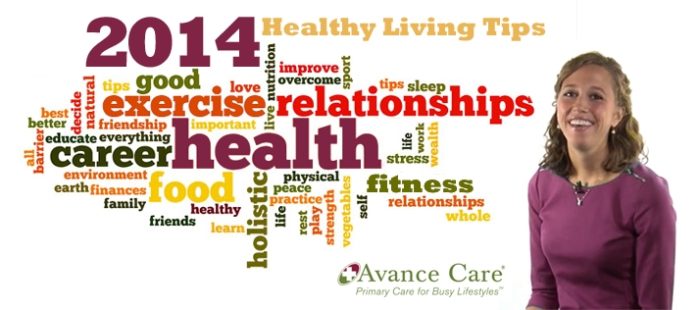Vitamin D is often called the “sunshine vitamin,” because our bodies produce it when exposed to sunlight. It’s essential for strong bones, a healthy immune system, and overall well-being. However, vitamin D deficiency is incredibly common, affecting millions of people worldwide. Let’s explore the signs and symptoms of vitamin D deficiency, who is at risk, and what you can do to ensure your levels are optimal.
Why Is Vitamin D Important?
Vitamin D plays a crucial role in several bodily functions, including:
Bone Health: It helps the body absorb calcium, which is vital for strong bones and teeth.
Immune System Support: It boosts the body’s ability to fight infections and reduces inflammation.
Mood Regulation: Low vitamin D levels are linked to mood disorders, including depression.
Muscle Function: It supports muscle strength and helps prevent falls in older adults.
Because it affects so many essential functions, a deficiency can lead to significant health problems.
Common Signs and Symptoms of Vitamin D Deficiency
1. Fatigue and Tiredness
Persistent fatigue is one of the most overlooked signs of vitamin D deficiency. If you’re feeling unusually tired or drained, low vitamin D levels could be a contributing factor. This is because vitamin D helps regulate energy levels and muscle function.
2. Bone and Back Pain
Vitamin D is crucial for calcium absorption. When your levels are low, you may experience bone pain, especially in the lower back and legs. This can lead to conditions like osteomalacia (softening of the bones) and increase your risk of fractures.
3. Muscle Weakness and Cramps
Muscle weakness, aches, and cramps are common signs of low vitamin D. This deficiency affects muscle function and can lead to muscle pain or difficulty with physical activities.
4. Depression and Mood Changes
Low levels of vitamin D have been linked to mood disorders, including depression, anxiety, and seasonal affective disorder (SAD). This is because vitamin D receptors are found in areas of the brain associated with mood regulation.
5. Frequent Illness or Infections
Vitamin D supports the immune system, helping your body fight off infections. If you’re getting sick frequently, especially with colds or respiratory infections, low vitamin D levels may be the cause.
6. Hair Loss
Severe hair loss can sometimes be linked to vitamin D deficiency. This vitamin plays a role in hair follicle health, and low levels may contribute to thinning hair or hair shedding.
7. Slow Wound Healing
If you notice that cuts, bruises, or surgical wounds are taking longer to heal, it could be a sign of vitamin D deficiency. This vitamin is essential for cell repair and immune function, both of which are crucial for healing.
8. Bone Loss
Low vitamin D levels can lead to bone density loss, increasing the risk of osteoporosis. If you’ve been diagnosed with low bone density, ensuring adequate vitamin D intake is essential for bone strength and health.
9. Headaches or Migraines
Some studies suggest a link between vitamin D deficiency and headaches or migraines. If you experience frequent or severe headaches, checking your vitamin D levels might be helpful.
10. Weight Gain
Low vitamin D levels have been associated with weight gain or difficulty losing weight. This may be due to its role in metabolism and fat storage.
Who Is at Risk of Vitamin D Deficiency?
Certain groups are more susceptible to vitamin D deficiency, including:
People with Limited Sun Exposure
Those who live in northern regions, spend most of their time indoors, or use heavy sunscreen may not get enough sunlight.
Older Adults
As we age, the skin becomes less efficient at producing vitamin D.
People with Darker Skin
Melanin reduces the skin’s ability to produce vitamin D from sunlight.
Those with Certain Medical Conditions
Conditions like Crohn’s disease, celiac disease, or kidney disease can affect vitamin D absorption.
Obese Individuals
Excess body fat can trap vitamin D, making it less available for use.
How to Diagnose Vitamin D Deficiency
If you suspect you may have a vitamin D deficiency, a simple blood test can confirm it. Your healthcare provider will measure the levels of 25-hydroxyvitamin D in your blood. Levels below 20 ng/mL (nanograms per milliliter) typically indicate a deficiency.
How to Boost Your Vitamin D Levels
1. Get More Sunlight
Aim for 10-30 minutes of midday sun exposure a few times a week. The amount of sun exposure needed varies based on skin type, location, and time of year. Remember to avoid excessive sun exposure to prevent skin damage.
2. Eat Vitamin D-Rich Foods
Incorporate these foods into your diet to boost your vitamin D intake:
- Fatty fish (salmon, tuna, mackerel)
- Egg yolks
- Fortified foods (milk, orange juice, cereals)
- Beef liver
- Mushrooms (especially those exposed to sunlight)
3. Take a Vitamin D Supplement
If you have low vitamin D levels, supplements can help. Your healthcare provider can recommend the right dosage based on your needs. The typical daily recommendation is 600-800 IU (International Units), but some people may need higher doses.
4. Maintain a Healthy Lifestyle
Exercise regularly, maintain a balanced diet, and avoid smoking to support overall health and help your body utilize vitamin D effectively.
When to See a Doctor for a Suspected Vitamin D Deficiency
If you are experiencing any of the symptoms mentioned, or if you belong to a high-risk group, consider consulting a healthcare provider. Early diagnosis and treatment of vitamin D deficiency can prevent complications and improve your overall health.
We’re Here to Help!
At our primary care practice, we’re committed to supporting your health and wellness. We offer comprehensive screenings and personalized treatment plans to address vitamin deficiencies and other health concerns.
If you suspect you may be experiencing vitamin D deficiency, contact us today to schedule an appointment. Together, we can help you achieve optimal health and well-being!



